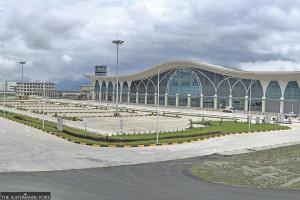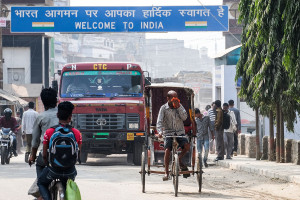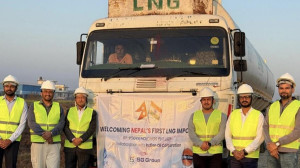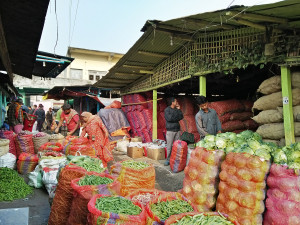Money
Nepal closer to 5G auction as regulator seeks ministry nod
There are speculations that geopolitical factors have stalled 5G rollout for past four years.
Krishana Prasain
After more than a year of waiting for the approval to auction 5G frequency, Nepal’s telecommunications regulator has finally forwarded the auction file to the Ministry of Communication, Information and Technology for a policy-level decision.
“Before going for auction, a policy-level decision needs to be made by the ministry. The authority has sent the document for the decision,” said Pradip Paudyal, deputy director at the Nepal Telecommunications Authority (NTA).
“As soon as the decision is made, we will publish a notice for auction, and any telecom service provider that has cleared all liabilities can bid for the frequency,” he said.
The authority has already prepared the work procedure for the auction, covering allocation of frequency bands, pricing, distribution processes and overall modality.
“We have opted for technology neutrality in the 5G auction, allowing telecom operators to introduce any type of service under the same spectrum domain,” Paudyal said. The regulator has made the 1800 MHz and 1900 MHz bands available under technology neutrality. Technology neutrality here means that although the auction is intended for 5G, operator(s) that win the bid can still use the spectrum for existing 4G or 5G services.
Nepal Telecom had first planned to start 5G trials in July 2021. After receiving regulatory approval in November 2021, it shifted the trial date to June 2022, with commercial rollout expected in August that year. None of these plans materialised.
Nepal Telecom has now completed its internal report on 5G rollout modalities. “Nepal Telecom is going to roll out 5G either in a non-standalone or standalone network,” said spokesperson Rabindra Manandhar.
A non-standalone network depends on an existing infrastructure for its core functions. In this case, a 5G non-standalone network uses the existing 4G LTE core for control and signalling while offering faster 5G data speeds.
“If we go for a non-standalone network, we will use the existing Huawei 4G technology. If we choose a standalone network, a new bidding process will be required,” Manandhar said. The company has already conducted limited trials using its existing 4G system.
There has been widespread speculation that 5G rollout delays over the past four years are linked to geopolitical factors.
Nepal Telecom had contracted two Chinese companies—Hong Kong-based China Communication Service International (CCSI) and ZTE—for its Rs19 billion nationwide 4G expansion.
ZTE supplied the core equipment, while CCSI handled Huawei’s radio equipment installation and testing. Under the agreement, ZTE and Huawei were also to provide free equipment for 5G trials.
Nepal Telecom, however, has consistently denied allegations of geopolitical interference.
The telecom has requested the regulator to provide 80 MHz of 5G bandwidth free of cost, Manandhar said. The NTA is yet to respond.
According to NTA’s Management and Information System report, Nepal has 834,972 ‘3G’ subscribers and 25.86 million ‘4G’ users across Nepal Telecom and Ncell.
Private operator Ncell has placed three conditions for sustainable 5G rollout.
In its 5G Roadmap, the company argues that the market must shift to subscription-based models such as monthly or weekly packs to spur demand. It also says telecom taxes and fees—currently absorbing 50–60 percent of annual revenues—must be rationalised to reduce the cost burden on consumers.
Ncell has also raised concerns about long-term investment security.
“There is uncertainty over how Ncell will operate after 2029, so why should the company invest Rs30-35 billion in introducing the technology?” the roadmap states.
As per the current share structure of Ncell, the company comes under the Nepal government's ownership after August 2029.
With rising use of artificial intelligence and increasing availability of 5G-compatible devices, telecom experts say the need for 5G is becoming urgent.
The technology’s high speed and ultra-low latency enable real-time AI processing, while AI improves the efficiency and reliability of 5G networks. Together, they support innovations such as smart cities, connected vehicles and advanced edge-computing services.
Service providers warn that by 2028, new mobile phone models may stop supporting 4G technology. However, they argue that Nepal’s economy is currently too weak for the massive investment required to build a 5G ecosystem.
Operators estimate that rolling out 5G nationwide will require Rs50-60 billion. They say both the market and consumers are unprepared, with device penetration still low and daily data consumption limited.
Telecom operators say that for Nepal to adopt 5G—an expensive, infrastructure-heavy technology—the government must either waive spectrum fees or significantly reduce charges.




 16.12°C Kathmandu
16.12°C Kathmandu















